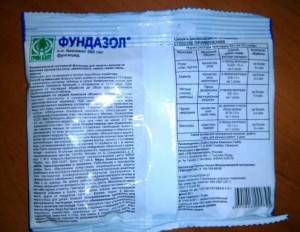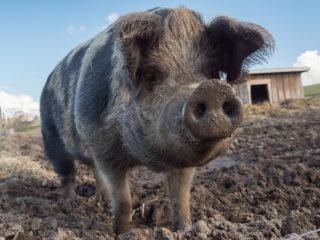Content
Garden crops, fruit trees and shrubs are susceptible to diseases. The worst enemy is the fungus that causes rot. Fungicides are considered the best drugs to combat diseases. One of them is Fundazol, an effective remedy in all climatic zones.
Distinctive characteristics of the drug
The drug Fundazol is used by gardeners, as well as gardeners in all regions. The fungicide is active regardless of climatic conditions. The characteristics of the drug highlight several features:
- The active substance functions over a wide temperature range. This makes it possible to use the fungicide Fundazol to treat the soil, as well as plantings, from early spring to late autumn.
- The lack of phytotoxicity allows gardeners to use the drug without fear of causing damage to the soil and plants.
- The action of the fungicide begins upon contact with any part of the plant. The active substance quickly spreads throughout the cells, creating a protective barrier against pathogens.
- The fungicide acts more effectively on plants when spraying the soil. The drug is absorbed by the roots and spreads along the stem, leaves, and inflorescences.
Despite the lack of phytotoxicity, the dosage should be observed. An excess of fungicide will not be beneficial.
Effect of the drug
The main composition of the drug foundationazole is the active substance benomyl. Thanks to this component, the drug has the following capabilities:
- Once the drug hits the plant, the fungus stops reproducing. Fundazole prevents spore division at the cellular level.
- The active substance inhibits spider mites and their larvae.
- Benomil prevents leaf beetle larvae from developing into adults.
- Fundazol destroys small parasitic worms, preventing them from reproducing on the plant.
A wide spectrum of action helps to cure plants from common diseases.
Purpose
The instructions for use of the Fundazol product state that the fungicide is used to treat almost all garden and garden crops. The drug can be sprayed or watered:
- flowers with spotting or powdery mildew;
- fruit trees in case of crop rot, scab, and also as protection against powdery mildew;
- berry bushes, strawberries and other crops suffering from rotting berries;
- tomatoes and cucumbers growing in open or closed ground;
- cabbage is watered at the root in case of clubroot disease;
- potatoes are treated with Fundazol for treatment and prevention;
- Flower and garlic bulbs are soaked in Fundazol solution before planting.
Each crop has its own dosage and optimal processing method, which is reflected in the fungicide instructions.
Instructions for use of fungicide
Usually, gardeners in the instructions for using the fungicide Fundazol are interested in how much water to dilute the drug with. Each type of treatment has its own dose, which is displayed on the drug packaging. On average, 20 g of dry matter is dissolved in 1 liter of water.
According to the instructions, Fundazol is used to spray the above-ground parts of plants or water the soil. You can soak seeds and bulbs in the solution before planting. Spraying or watering with the working solution is carried out twice a season. In the heat, the active ingredient Fundazol works more actively than in the cold. To process the plantings, choose a warm, windless day. The second treatment with fungicide is carried out no earlier than three weeks later. This is the time that the protective effect of the drug lasts.
When looking for an answer to the question, an analogue of Fundazol or what to replace it with, it is worth finding out the compatibility of the fungicide with other drugs. Two items can be included in this list:
- preparations with a neutral reaction to aqueous solvents;
- most drugs, which include pesticides and fertilizers, that affect plant growth.
Fundazol is strictly incompatible with solutions containing calcareous or alkaline media.The active ingredient of the fungicide has poor contact with a group of drugs based on benzimidazole or thiophanate.
Treatment of vegetable and horticultural crops with a working solution
Continuing the review of the drug Fundazol, instructions for use, let's look at examples of using the working solution for different crops:
- Cabbage is treated with Fundazol to prevent the dangerous disease clubroot. Water the soil with the solution before planting seedlings. Consumption is approximately 5 l/10 m2.
- For powdery mildew, the instructions for using Fundazol for cucumbers or tomatoes state that you need to prepare a solution of 5 g of fungicide and 5 liters of water. Spray the green mass twice per season. The last treatment is carried out 7 days before harvesting cucumbers and 14 days before harvesting tomatoes.
- Potato tubers are treated for prevention before planting. The solution is prepared from 1 liter of water and 20 g of dry powder. The dose is approximately enough for 20 tubers.
- Stone fruit trees are treated with Fundazol to prevent rot, scab and powdery mildew. During the epidemic period, five sprayings are allowed per season. The solution is prepared from 10 liters of water and 10 g of powder. Approximate consumption for a small tree is 2 liters, for a large tree - at least 5 liters. Spray the first time until the color releases. The last treatment is approximately three weeks before harvest.
- Berry bushes, strawberries, and grapes are sprayed with a solution of the same consistency as for fruit trees. The first treatment is carried out until color appears. Spray the second time after picking the berries. The approximate solution consumption is 1.5 l/10 m2.
- Using Fundazol for garlic or gladioli involves soaking the bulbs in the solution for 2 hours before planting.
- Flowers, mainly roses, are sprayed when spotting appears on the leaves.Up to four treatments are performed per season.
Depending on the dosage, processing method and type of crop, the protective effect of the fungicide lasts 1–3 weeks.
Orchid processing
The drug Fundazol is well suited for ornamental plants grown indoors. The fungicide is a savior for orchids. The flower is often susceptible to fungal diseases that appear on the leaves and stems. The first sign is a strong softening of the green mass, which is unusual for a flower.
If an illness is detected, the orchid is immediately treated with a solution of Fundazol. Severely affected areas may not heal and will begin to turn black. Leaves and stems are cut with a sharp knife, and the cut site is filled with Fundazol solution.
At the initial stage, the orchid can be saved by transplanting it into any transparent container, for example, a plastic jar. Instead of soil, use a mixture of dry substrate with foam crumbs. After transplantation, watering is carried out only with a fungicide solution. The green mass of the orchid is not sprayed from above. Drainage holes must be drilled in the bottom of the jar to prevent root rot.
The video talks about the benefits and harms of Fundazol for orchids:
Safety precautions when working with fungicide
In terms of danger to humans, Fundazol belongs to the second class. The fungicide will not cause any particular harm to birds, animals and insects. Spraying of plantings is carried out in special clothing. It is important to cover the respiratory organs with a respirator or gauze bandage. When spraying tall trees, you will need glasses.
Upon completion of work, all outer clothing is removed in a designated place, away from sources of drinking water and food. If Fundazol gets into the eyes, the organs of vision are washed under running water for 10 minutes.The face is thoroughly washed with soap. If a fungicide accidentally gets into the digestive system, first wash the stomach, and then immediately call a doctor.
Keep the drug away from children. The remaining solution is disposed of. The powder is stored in its original packaging. Choose a cool, dry place, without direct sunlight.
Reviews
Reading the instructions for use about Fundazol, reviews from gardeners help you get to know the drug better. Identify his positive and negative qualities.














